SpringBoot集成Swagger2的使用
1、热部署的问题
什么叫热部署:简单的说就是项目启动之后 如果有更改的内容 项目会自动的实现即时的更新 而不需要从新手动的启动这个项目----热部署
1.1、第一步是导包
<!--导包
下面的这个包是咋们开发的时候 需要的所有的工具 在这里面都是有的
热部署的这个工具也是位于这个包里面
-->
<dependency>
<groupId>org.springframework.boot</groupId>
<artifactId>spring-boot-devtools</artifactId>
</dependency>
1.2、配置plugin
<plugins>
<plugin>
<groupId>org.springframework.boot</groupId>
<artifactId>spring-boot-maven-plugin</artifactId>
<configuration>
<fork>true</fork>
</configuration>
</plugin>
</plugins>
1.3、开启自动编译
file----Settings----Complier
右侧选中自动编译
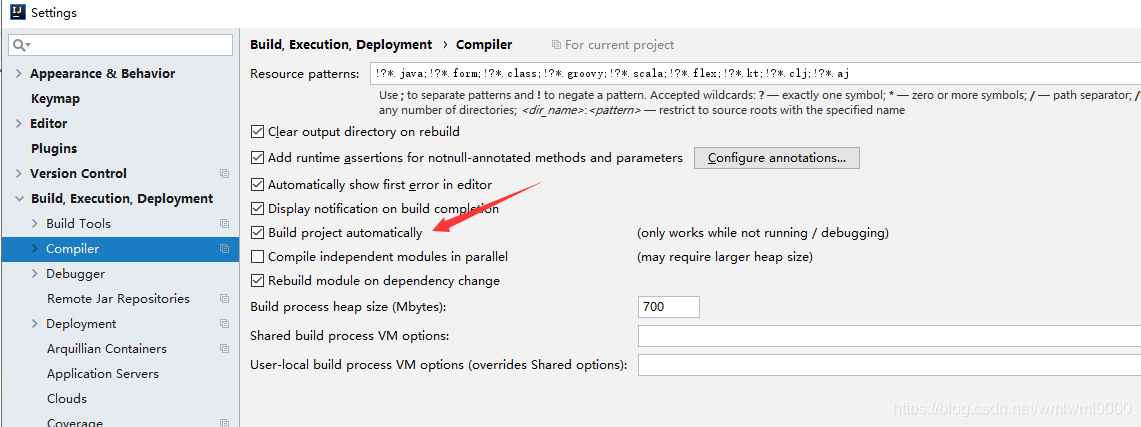
1.4、在IDEA设置运行的过程中允许自动编译
操作:ctrl+shirt+alt+/ 选择Registry
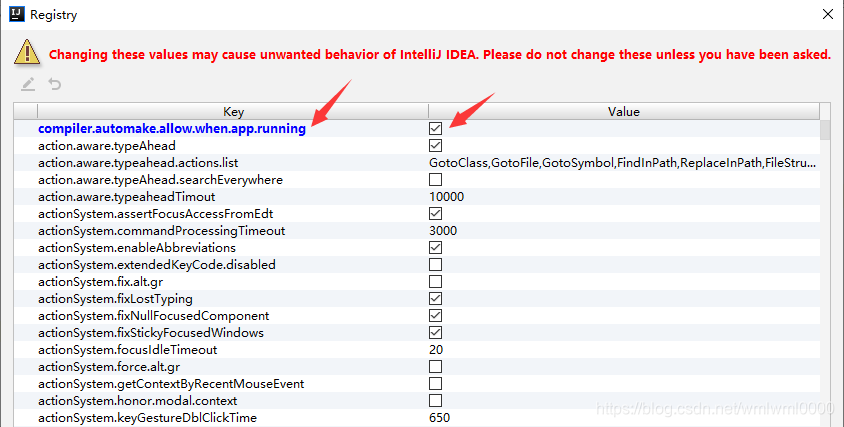
2、手动进行热部署的触发
2.1、导包
<!--导包
下面的这个包是咋们开发的时候 需要的所有的工具 在这里面都是有的
热部署的这个工具也是位于这个包里面
-->
<dependency>
<groupId>org.springframework.boot</groupId>
<artifactId>spring-boot-devtools</artifactId>
</dependency>
2.2、配置plugin
<plugins>
<plugin>
<groupId>org.springframework.boot</groupId>
<artifactId>spring-boot-maven-plugin</artifactId>
<configuration>
<fork>true</fork>
</configuration>
</plugin>
</plugins>
2.3、配置触发
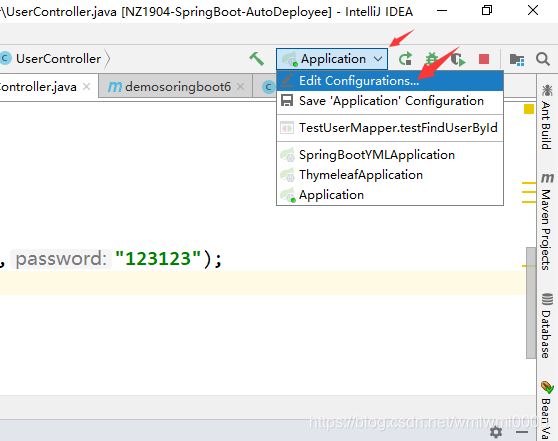
2.4、配置选择
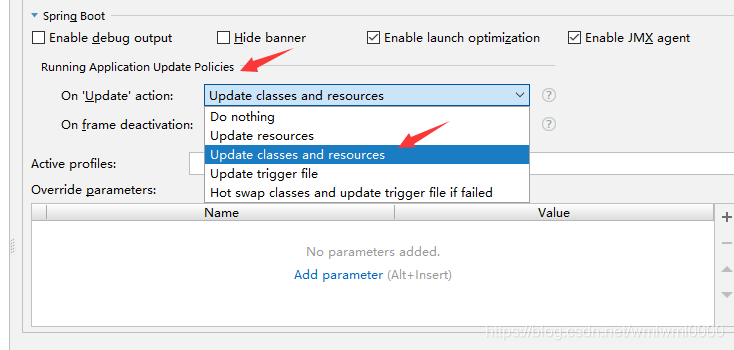
2.5、触发的位置
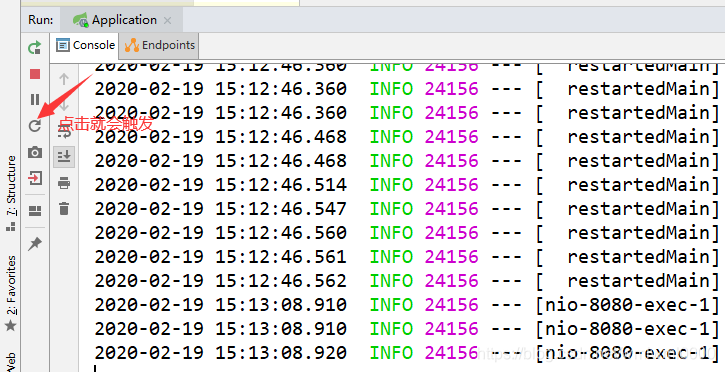
3、Swagger2是什么
官方:Swagger是一个规范的、完整的的框架 这个框架主要的功能是生成、描述、调用和可视化的RESFful风格的服务
Swagger是一个生成接口文档、以及接口描述、以及测试的这样一个框架
3.1、前后分离以及给穿戴设备提供接口的分析
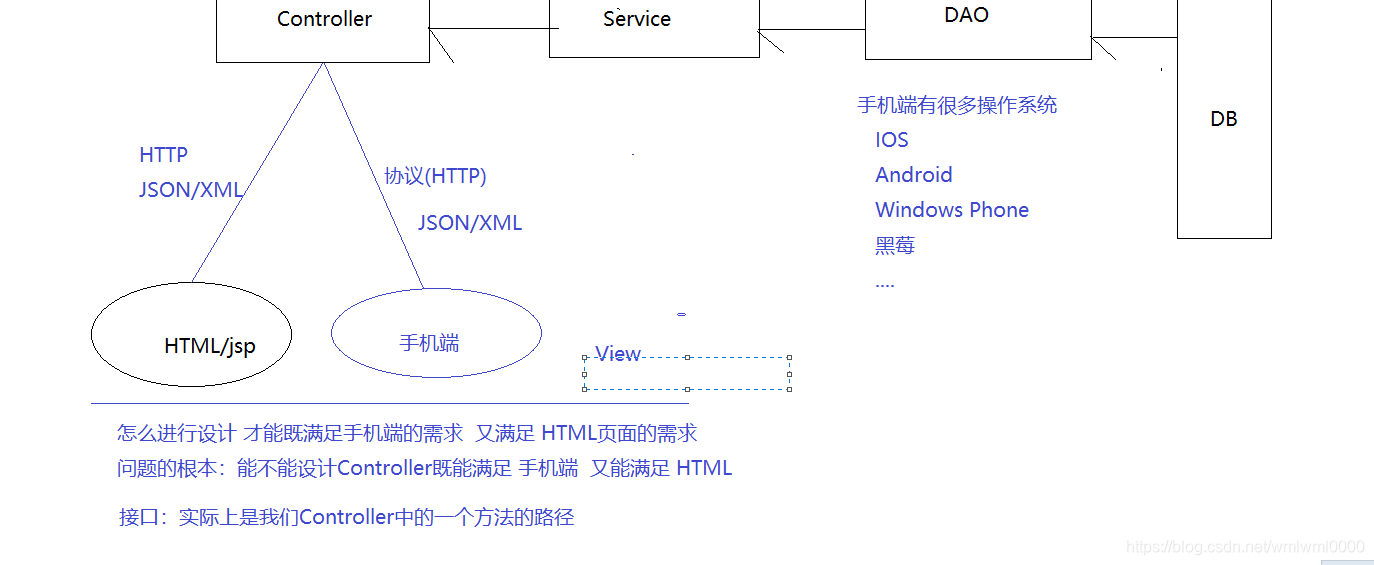
3.2、存在的一些问题
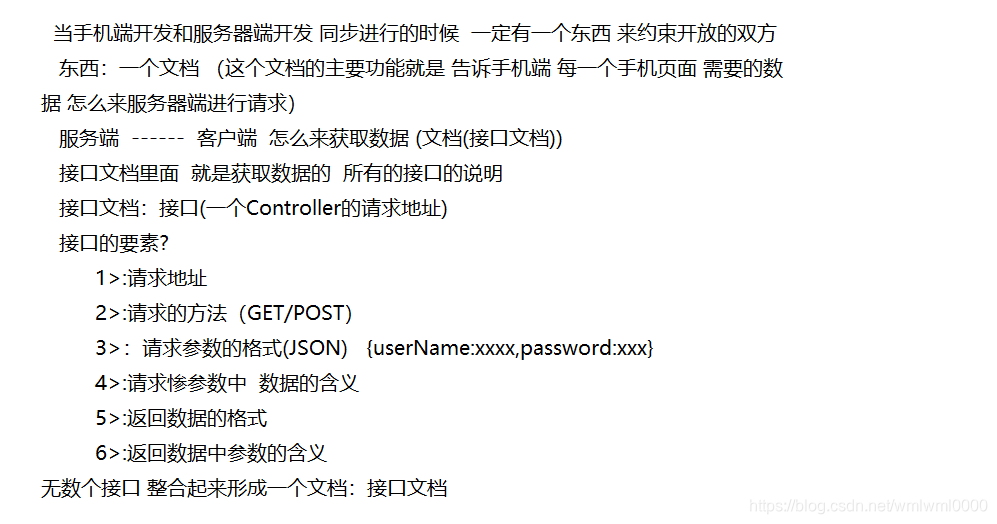
3.3、Swagger2到底是什么?
这个东西简单的说 就是可以将我们写的这个接口自动生成文档 以及测试环境
4、Swagger2中的一些组件
Swagger是一个开源的项目
Swagger-tools:主要存放的是和Swagger集成和整合的工具
Swagger-core:主要就是整个Swagger的核心
Swagger-js:主要是用在JavaScript上的Swagger实现
Swagger-ui:Swagger自动生成文档的这一部分API
5、Swagger的第一个HelloWorld程序
5.1、导包
<!--导包-->
<dependency>
<groupId>io.springfox</groupId>
<artifactId>springfox-swagger2</artifactId>
<version>2.7.0</version>
</dependency>
<dependency>
<groupId>io.springfox</groupId>
<artifactId>springfox-swagger-ui</artifactId>
<version>2.7.0</version>
</dependency>
5.2、编写配置文件
@SpringBootConfiguration //表明是一个配置文件
@EnableSwagger2 //使能Swagger
public class SwaggerConfig {
@Bean
public Docket docket(){
return new Docket(DocumentationType.SWAGGER_2)
.apiInfo(apiInfo()) //这个方法的作用(生成接口的时候页面显示的信息)
.select() //表示的是选择那些路径和API生成文档
.apis(RequestHandlerSelectors.basePackage("com.qf.springboot.controller")) //告诉他要扫描的接口存在的这个包
.paths(PathSelectors.any()) //对所有的API进行监控
.build(); //构建
}
/**
* 这个方法主要的作用是显示页面上的信息
* @return
*/
private ApiInfo apiInfo() {
return new ApiInfoBuilder()
.title("这里是测试Swagger2的功能文档") //文档的标题
.description("这里是NZ1904测试用的") //文档的描述
.contact("小波波") //作者
.version("v1.0") //版本
.build();
}
}
5.3、测试
http://HOST:8080/swagger-ui.html
如果出现Swagger描述的这个页面说明是正确的
5.4、传单无参的写法
/**
* 没有参数的玩法
* @return
*/
@RequestMapping(value = "test",method = RequestMethod.GET)
@ApiOperation(value = "测试接口1")
public RespResult<String> test(){
RespResult<String> result = new RespResult<>();
result.setCode(1);
result.setMsg("请求成功");
result.setData("xxxxxxxxxxxxxxxxx");
return result;
}
5.5、传递有参数的时候的写法
/**
* 有简单参数的玩法
* @ApiImplicitParam注解中参数的说明
* header:请求的数据放在请求头里面的 就用这个类型
* query:请求的参数 放到了请求地址上、配套的(@requestParam)
* path:(RestFul中用于面向资源编程的获取数据的方式),配套的获取数据的注解 @PathVarible
* body(不会用)
* form(基本不用)
* @return
*/
@RequestMapping(value = "test1",method = RequestMethod.GET)
@ApiOperation(value = "测试接口1")
/**
* paramType:类型(数据放在那里的问题)
* name:说明的是参数的名字叫什么
* value:当前参数的含义
* required:当前使用这个接口对哦时候 这个参数是不是一定要传
* dataType:参数的类型
*
*/
@ApiImplicitParam(paramType = "query",name = "userName",value = "用户名",required =true,dataType = "String")
public RespResult<String> test(@RequestParam("userName") String userName){
RespResult<String> result = new RespResult<>();
result.setCode(1);
result.setMsg("请求成功");
result.setData("xxxxxxxxxxxxxxxxx:"+userName);
return result;
}
5.5、传递多参数的写法
/**
* 有多个参数的玩法
* @return
*/
@RequestMapping(value = "test4",method = RequestMethod.GET)
@ApiOperation(value = "测试接口4",notes = "调用当前方法的注意事项")
@ApiImplicitParams({
@ApiImplicitParam(paramType = "query",name = "userName",value = "用户名",required =true,dataType = "String"),
@ApiImplicitParam(paramType = "query",name = "password",value = "密码",required =true,dataType = "String")
})
public RespResult<String> test3(@RequestParam("userName") String userName,@RequestParam("password") String password){
RespResult<String> result = new RespResult<>();
result.setCode(1);
result.setMsg("请求成功");
result.setData("xxxxxxxxxxxxxxxxx:"+userName+"----:"+password);
return result;
}
5.6、传递对象
5.6.1、对象的写法
@Data
@AllArgsConstructor
@NoArgsConstructor
@ApiModel(value = "用户对象")
public class User {
@ApiModelProperty(value = "用户id")
private int id;
@ApiModelProperty(value = "用户名")
private String userName;
@ApiModelProperty(value = "密码")
private String password;
}
5.6.2、方法的写法
/**
* 有多个参数的玩法
* @return
*/
@RequestMapping(value = "test5",method = RequestMethod.POST)
@ApiOperation(value = "测试传递对象过来",notes = "调用当前方法的注意事项")
public RespResult<User> test5(@RequestBody User user){
RespResult<User> result = new RespResult<>();
result.setCode(0);
result.setMsg("请求成功--------");
result.setData(user);
return result;
}
5.6.3、前后分离请求资源的流程
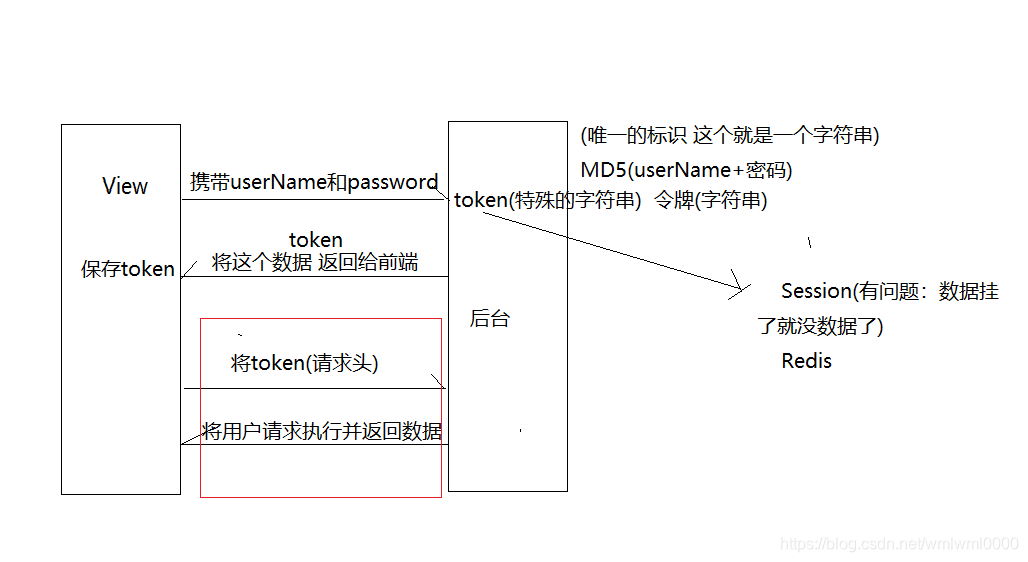
5.6.4、Swagger支持token的传输
@RequestMapping(value = "test6",method = RequestMethod.POST)
@ApiOperation(value = "测试传递对象过来",notes = "调用当前方法的注意事项")
@ApiImplicitParam(paramType = "header",name = "token",value = "用户token",required = true,dataType = "String")
public RespResult<User> test6(@RequestBody User user, HttpServletRequest request){
String token=request.getHeader("token");
RespResult<User> result = new RespResult<>();
result.setCode(0);
result.setMsg("请求成功--------:"+token);
result.setData(user);
return result;
}
5.6.5、Swagger如何测试文件的上传
/**
* Swagger测试文件上传的方法
* @param request
* @param uId
* @param file
* @return
*/
@RequestMapping(value = "fileupload",method = RequestMethod.POST)
@ApiOperation(value = "测试文件上传",notes = "调用当前方法的注意事项")
@ApiImplicitParams(
{
@ApiImplicitParam(paramType = "header",name = "token",value = "用户token",required = true,dataType = "String"),
@ApiImplicitParam(paramType = "query",name = "uId",value = "用户的id",required = true,dataType = "Integer")
}
)
public RespResult<String> fileupload(HttpServletRequest request,@RequestParam("uId")int uId,@RequestParam("file") MultipartFile file){
String token=request.getHeader("token");
RespResult<String> result = new RespResult<>();
//接下来就可以将文件另存了
try {
file.transferTo(new File("G:/bobo.jpg"));
result.setCode(0);
result.setMsg("请求成功--------:"+file.getOriginalFilename());
result.setData("上传是成功的");
} catch (IOException e) {
result.setCode(1);
result.setMsg("上传是失败的:"+e.getMessage());
result.setData("");
}
return result;
}
6、Swagger中的一些常用的注解
@Api :这个注解的主要功能是描述当前的Controller是用来干嘛的
@ApiOperation :这个注解的主要功能是说明当前接口的作用
@ApiImplicitParam :这个的主要功能是接口的参数说明
@ApiImplicitParams:多参数的时候使用 参数的说明
@ApiParam :主要功能也是接口的参数说明
@ApiModel:主要就是对接口中传输的对象的说明
@ApiModelProperty :这个是接口参数对象中的成员变量的说明
@Apiresponse:返回结果的说明





 本文详细介绍SpringBoot项目中集成Swagger2的过程,包括热部署配置、Swagger2核心功能及注解使用,演示从零开始创建并测试RESTful API文档。
本文详细介绍SpringBoot项目中集成Swagger2的过程,包括热部署配置、Swagger2核心功能及注解使用,演示从零开始创建并测试RESTful API文档。
















 792
792

 被折叠的 条评论
为什么被折叠?
被折叠的 条评论
为什么被折叠?








